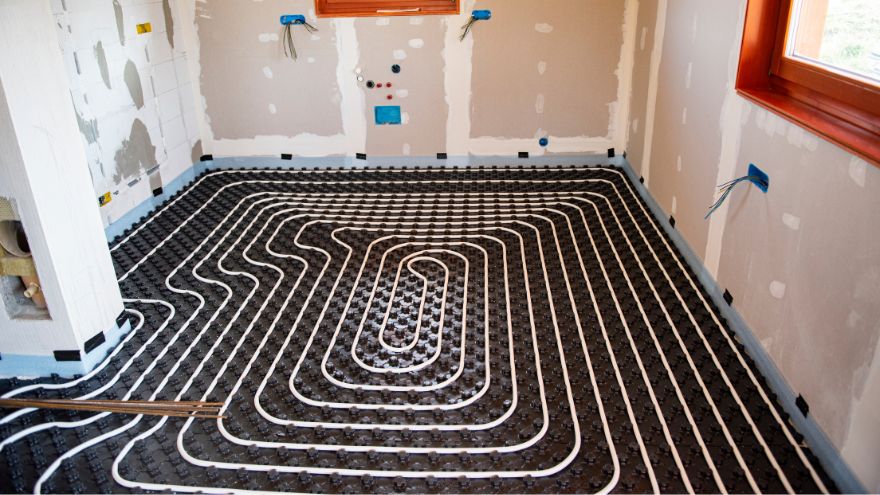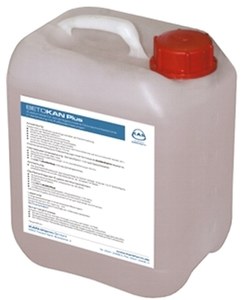Underfloor heating is a very functional and increasingly valued alternative to classic radiators. What screed should be used for underfloor heating?

Check underfloor heating in the Onnline system at the Onninen wholesaler
Which screed should be used for underfloor heating?
The decision to install underfloor heating should be made at the building design stage. This will allow you to optimally use the capabilities of the popular underfloor heating. Laying out the heating system requires making a decision on how to perform the installation, selecting appropriate system elements, and also choosing a screed option that will tightly cover the underfloor heating. This is extremely important because the creation of empty spaces reduces the heating efficiency. Then the so-called thermal bridges. A screed with a liquid consistency will work best. It is easy to apply and will thoroughly cover the entire surface.
When the material is both durable and flexible, it provides the heating installation with maximum protection, protecting the pipes against mechanical damage. When looking for an optimal solution for underfloor heating, it is important to ensure that the material from which the screed is made has appropriate parameters allowing for heat conduction. This is important because the floor will heat up faster and maintain the temperature longer. This feature will reduce heating costs. Thermal conductivity is determined by the lambda coefficient, and the higher its value, the higher the degree of heat conduction.
The most commonly used solutions are concrete or anhydrite screeds. Which variant will be used should be considered already at the design stage, because the heating installation is planned and the materials are selected depending on the material.
How much screed for underfloor heating?
The thickness of the screed layer depends  depends on the selected variant. The layer cannot be too thick or too thin. Most manufacturers indicate that the maximum thickness should not be greater than 6.5 cm, and the thicker it is, the lower the thermal conductivity. When determining the optimal thickness, not only the heating efficiency is taken into account, but also the load-bearing capacity and the potential risk of cracking. You can purchase a special concrete additive for concrete screeds, which will allow you to obtain concrete of the appropriate quality.
depends on the selected variant. The layer cannot be too thick or too thin. Most manufacturers indicate that the maximum thickness should not be greater than 6.5 cm, and the thicker it is, the lower the thermal conductivity. When determining the optimal thickness, not only the heating efficiency is taken into account, but also the load-bearing capacity and the potential risk of cracking. You can purchase a special concrete additive for concrete screeds, which will allow you to obtain concrete of the appropriate quality.
The final thickness of the screed largely depends on the materials used. In the case of a screed, the thickness will most often be 6.5 cm, although it should be remembered that the final thickness also depends on the maximum temperature the flooring can reach. A parameter that should also be taken into account is the load-bearing capacity of the floor.
Anhydrous screed for underfloor heating
Currently, the most popular method of making a screed for underfloor heating is anhydrous screed. This is a special solution that has been developed in such a way as to maximize the potential of underfloor heating. Anhydrous screed, also called self-leveling screed, is available in liquid form, thanks to which it tightly fills the space between the heating system pipes. In this variant, the floor will heat up faster, which is important in terms of heating savings. Another big advantage is the ease of application.
In the case of a self-leveling screed, its thickness can be reduced without the risk of cracking. This reduces the risk of potential damage to the installation. The use of less material makes this solution suitable, for example, when the screed for underfloor heating is to be made on a higher floor. This reduces the load on the building structure. Anhydrous screed is characterized by excellent thermal conductivity properties.
Concrete screed for underfloor heating
The screed for underfloor heating can also be made of cement. However, concrete has weaker parameters than self-leveling screed. First of all, it is a material that is much worse to apply. You have to be very careful to avoid thermal bridges. However, the big advantage of concrete is its durability. Ready-made concrete mixtures are available for sale, although you can also prepare the material yourself - however, you should be especially careful to mix the components in the right proportion, because only then will the whole thing be durable. In the case of a concrete screed, remember to use reinforcement elements with anti-shrinkage properties, the so-called micro-reinforcement fibers.
When using a concrete screed for underfloor heating, remember that its thickness should be at least 6.5 cm, because such a layer ensures optimal heat distribution on the floor while ensuring adequate strength.
Check underfloor heating in the Onnline system at the Onninen wholesaler